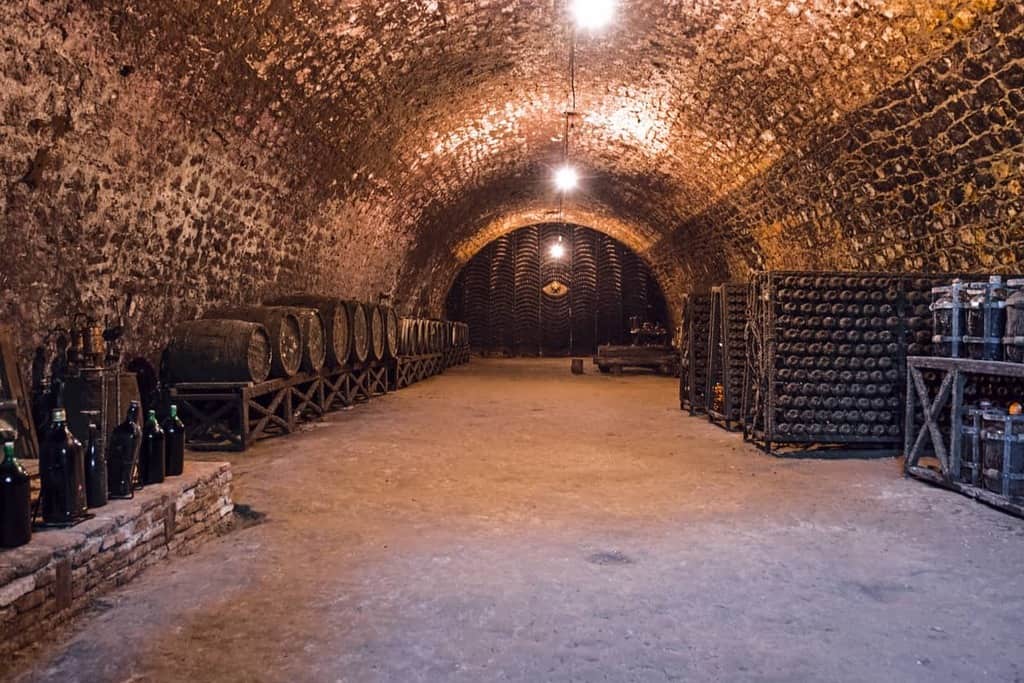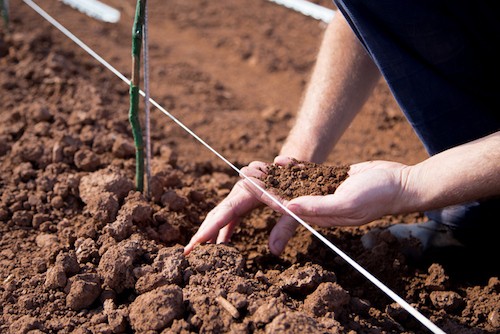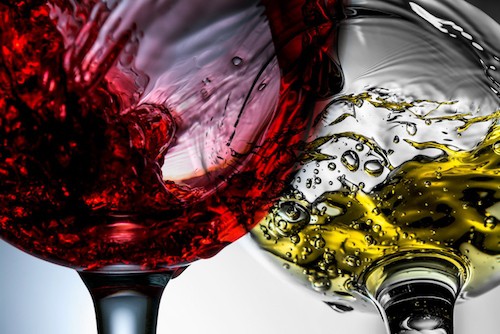Earlier this year I wrote about simple ways to think about wine to make it as easy as possible for everyone to understand. Often, in my training sessions at DineAmic restaurants I feel like I’ve crafted an art of simplicity that cannot be found anywhere else – at least in my experience. New hires, and at times newbies to wine in general, find this approach immensely valuable as you can literally see the lightbulb turning on throughout my 90-minute training session.
It’s important to note that I created this for the beginner. Advanced level professionals are well beyond this basic approach, so remember that this is for the entry level professional and/or consumer. Some of these topics get obscenely in–depth, but my goal here is to bring everyone to a level of education where wine can be enjoyed with confidence. So here goes part two of my wine 101.
Minerality
Lately, I’ve been to some seminars where minerality has been a hot topic. Its legitimacy has been questioned among some very high-level professionals. I for one am a big believer that wine takes flavors from the very ground in which the grapes are planted and the areas surrounding it.
Imagine you’re at a Mexican restaurant. You order the table-side prepared guacamole. Envision the bowl that they put it in, a round, mortar looking bowl made of rock. So, let’s say you and I grab a bottle of water and I pour half of it in that bowl, and then the other half of it in a wine glass. I put it aside and tell you we will taste these waters two weeks from now. We wait the full two weeks and come back. Will the waters taste the same? If you are thinking no, you are correct. The water in the wine glass will taste like plain bottled water. The water in the bowl, however, will taste a little bit like the bowl. That’s because the rock the bowl is made from is porous and will give/take the elements from itself to the water. The glass is simply a neutral vessel that will give/take nothing from the water.
Now I need you to put your imagination hats on and pretend you are a grape vine. Let’s say your roots are two to three feet deep in the ground, which is comprised of typical dirt and soil. A heavy rain occurs, soaking the ground and your roots. Ahhhhhhh, the good life. All the water you could every need just handed right to you. Your roots soak it up and provide plenty of water and nutrients to your vine above ground and ultimately your grapes. But what happens when that water dries up in a week and there’s no more rain and you’re starting to get hungry again? You must dig deeper and grow! So, your roots push through the next six inches of earth and come upon some red-clayish elements. It’s still completely dry. You’re almost dying and there’s no rain coming to help you! You grow some more – it’s life or death at this point and you’re a living thing!
Over the next week you desperately push your way through this clay–like earth, and you come upon some rock elements. It’s a mixture of limestone and volcanic rock and it just so happens it’s still wet from the rain that occurred two weeks ago. What are you going to do? If you said wrap yourself around that rock and drink the water, congratulations, you get to live! So, does it make sense that the water you just drank that had been sitting on those rocks for the last two weeks might taste a little bit like that rock? Does it make sense that when you pump that water through your veins and into your grapes that the grape may taste a bit like that rock? How about when I crush you and make wine and then tell you the finished product tastes a bit like those rocks where you’re planted? If you’re thinking yes, you now have a sense of what minerality in wine is.
Wine acquires minerality in other ways as well. One of my favorite estates in Napa Valley is Continuum. Next to, and almost around the entire vineyard, are small fields of lavender. Now imagine you’re the vine again, does it make sense to you that wind blows pollen from the lavender that gently coats the grapes, and when I crush the grapes, a little bit of lavender pollen falls into the juice? My finished product has notes of lavender! A few more examples? Truffles are common notes in Burgundy, so what do you think might be in the ground that you wrapped your roots around and from which you drank? Olive notes? Probably some dead olive compost your roots found while searching for water. Bordeaux often throws elements of pencil lead (nerdy Somm descriptor), well guess what, tons of graphite in the soils of Bordeaux.
These secondary flavors in wine come from many sources, some even just due to the natural characteristic of the grape strain, but hopefully this gives you a better understanding what us Somm nerds are talking about when we toss out those interesting flavors we’re tasting.
Oak Park Two
In part one of this series, I talked about oak being the “big bad scary monster,” and that extreme wines appreciate oak (warm and hot climates) and easy/gentler wines (cool and cold climates) prefer to stay away from said monster. However, what we didn’t talk about was what influence oak has on wine.
There are two general styles of oak: new and used/neutral oak. New oak does two things – imparts both flavor and oxygen into the wine. Used/neutral oak only imparts oxygen as its flavors have been “used” up over the years. I’m often told on the floor by a guest that they love oaky wines, but what does that mean? It usually means the flavor imparted on the wine, and when I talk about flavor, I don’t mean the wine tastes like an oak tree. The flavors new oak usually has on wine are those of baking spices: vanilla, chocolate, brown sugar, nutmeg, cinnamon, coconut, pie crust – basically anything you used as a kid to bake with is what new oak does to wine. So, when a guest tells me they like oaky wines, they’ve basically told me they like dessert! What kind of wines could handle all this oak and flavor? If you said extreme climate (warm and hot) wines, you are correct. If oak (dessert) is indeed what you enjoy in your wines, look to the warmer climates of the world!
Tannin
Dryness. That’s what this wine term means to 99% on the consumer world. Keeping things simple as I always like to do, if you like dry wines, you like wines high in tannin. I really wish Somms would stop trying to teach consumers about “tannin” level when they could just make it easy on everyone and use the word “dryness.” I get they’re arguing sugar levels, but they’re just making things more confusing. Dryness ties in to the previously talked about used/neutral oak, so we’ll get to that. But first let’s understand how wines become dry.
RELATED: More on the Science of Tannins in Wine
First and foremost, for a wine to be dry the sugar must be completely fermented from it. Almost all red wines are dry in this sense. Next, is the level of dryness which comes from the skins, stems, and seeds of the grape. The more off all that stuff, the higher potential dryness, and where do you find thick-skinned grapes? Hotter climates! If you think about it, could a fragile, thin-skinned grape make it in sweltering heat? No, it would burn up and die. Thin-skinned grapes are made for cool climates: loess extreme, less dryness, and less oak. Hot climate wines have all the extremes: lots of oak and super thick skins that can lead to the driest wines on the planet. A few exceptions to the rule can be found due to unique grape varietals, like Nebbiolo, but this is a good rule of thumb for the non-professional consumer.
Finally, circling back on the used/neutral oak, oxygen is the number one way to soften the dryness, and that’s what both versions of oak do by imparting air into the wine. So anytime a wine has used/neutral oak on it, the effort was made to soften the dryness (make smoother) without changing the flavor (no dessert for you)!
Hopefully these simplistic explanations offer some insight on the issues of minerality and tannin, neither of which should be intimidating. Too many Somms teach to their level of knowledge and forget what it was like to be a beginner. They’ve essentially lost contact with 99% of the wine consuming world. I’ll never forget when I was 21 years old and was in my first wine training class, the intimidation was ridiculous, and I never want to make a beginner feel the way I did that day. I also hope it provides you with a sense of confidence when purchasing wines in a restaurant or wine shop.
Next time we can dig a little deeper with Wine Made Easy Part Three. Stay tuned!
Learn More About Wine from Adam
Part I: Understanding Wine, Wine Styles & Regional Styles
5 Up-And-Coming Wine Regions To Explore
Which Wines To Bring To Social Functions & Parties
The Do’s and Don’t’s of Ordering Wine at a Restaurant
How To Become A Successful Sommelier… According to a Successful Sommelier


